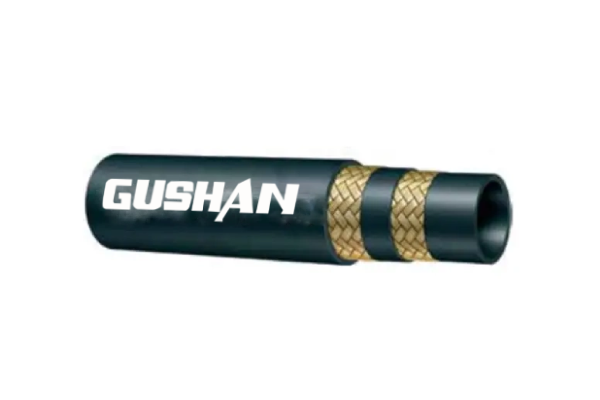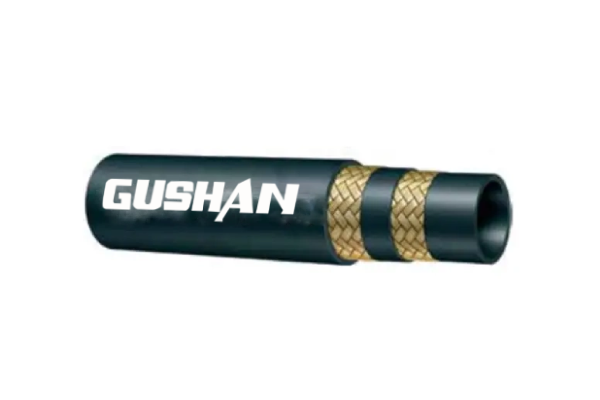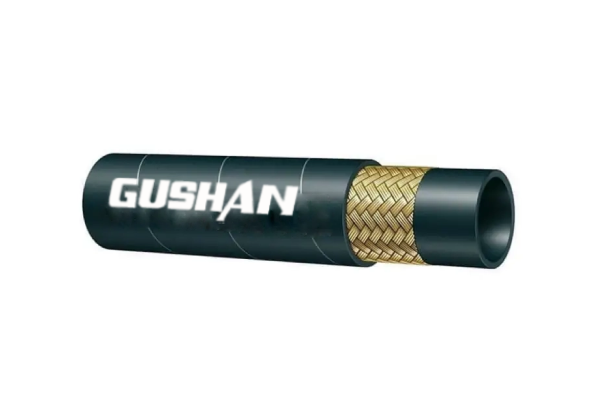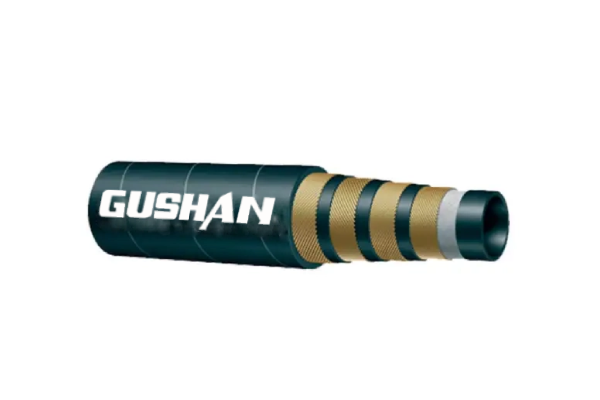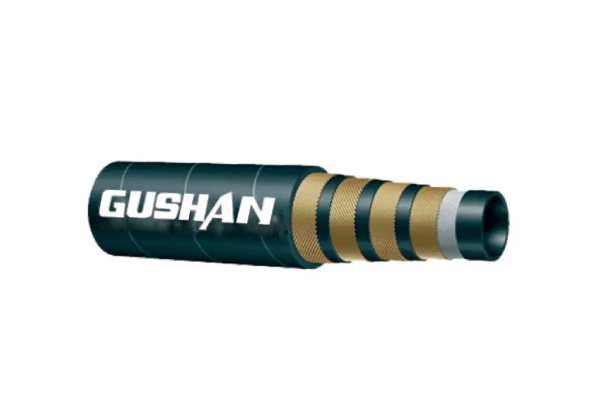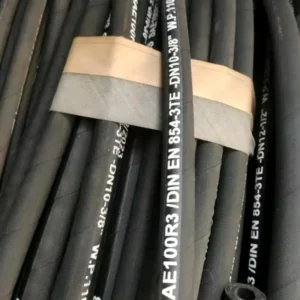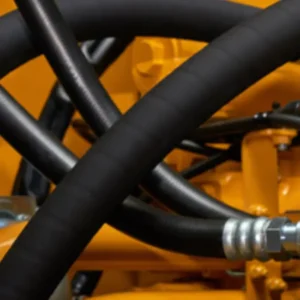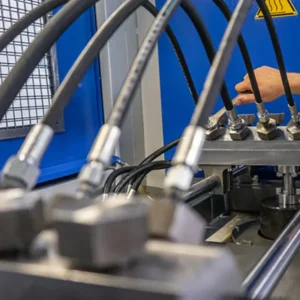Hydraulic hoses are essential components in countless industrial and mobile applications. Understanding the different types and their designations is crucial for selecting the right hose for your specific needs. This blog post will delve into the common abbreviations used in hydraulic hose classifications, specifically focusing on SC, SN, SP, and SH.
By the end of this article, you’ll have a clear understanding of what these letters signify and how they relate to the construction and performance characteristics of hydraulic hoses.
What Is Hydraulic Hose SC
In the industry of hydraulics, the abbreviation “SC” typically refers to a specific type of hose construction.
It usually signifies a hydraulic hose with:
- Two steel wire braids: This provides high strength and pressure resistance, making SC hoses suitable for demanding applications.
- Smooth outer cover: This type of cover offers good abrasion resistance and is often preferred in applications where the hose may come into contact with other components or surfaces.
2SC Hydraulic Hose Vs 1SC Hydraulic Hose
The primary difference between 2SC and 1SC hydraulic hoses lies in their reinforcement:
2SC Hoses: These hoses feature two steel wire braids. This double layer of reinforcement significantly enhances their:
- Pressure resistance: 2SC hoses can withstand much higher pressures compared to 1SC hoses.
- Strength: The extra braid provides greater durability and resistance to external forces.
1SC Hoses: These hoses have a single steel wire braid. This makes them:
- More flexible: 1SC hoses are generally more bendable and easier to route compared to 2SC hoses.
- More cost-effective: The single braid construction reduces manufacturing costs, making 1SC hoses typically more economical.
Here’s a chart summarizing the key differences between 2SC and 1SC hydraulic hose:
| Feature | 2SC Hose | 1SC Hose |
|---|---|---|
| Reinforcement | Two steel wire braids | One steel wire braid |
| Pressure Rating | Higher | Lower |
| Flexibility | Less flexible | More flexible |
| Cost | Generally more expensive | Generally more cost-effective |
| Applications | High-pressure applications, heavy-duty equipment | General industrial, lower-pressure applications |
- Choose 2SC hoses when you need to handle extremely high pressures and require maximum strength and durability.
- Choose 1SC hoses when flexibility and cost-effectiveness are more critical factors.
Note: These are general guidelines. Always consult the manufacturer‘s specifications and industry standards for precise details and performance characteristics of specific 2SC and 1SC hose models.
Key Characteristics of SC Hydraulic Hoses:
- High Pressure Capability: SC hoses are designed to handle high-pressure hydraulic fluids, making them suitable for heavy-duty applications.
- Good Flexibility: Despite their robust construction, SC hoses maintain a reasonable level of flexibility, allowing for easier installation and routing.
- Abrasion Resistance: The smooth outer cover provides good protection against abrasion, which is crucial in applications where the hose may rub against other components.
Applications of SC Hydraulic Hoses:
- Construction Equipment: SC hoses are commonly used in heavy-duty construction equipment, such as excavators, bulldozers, and loaders.
- Industrial Machinery: They are also widely used in various industrial machinery, including presses, cranes, and other heavy-duty equipment.
- Mobile Hydraulics: SC hoses find application in mobile hydraulic systems, such as those found in agricultural machinery and trucks.
Remember: While “SC” generally refers to this specific hose construction, it’s always essential to consult the manufacturer‘s specifications and industry standards for precise details and performance characteristics.
What Is Hydraulic Hose SN
In the hydraulic industry, the abbreviation “SN” typically refers to a specific type of hose construction. It generally indicates a hydraulic hose featuring:
- One steel wire braid: This provides a good balance of strength and flexibility, making SN hoses suitable for a wide range of applications.
- Smooth outer cover: Similar to SC hoses, SN hoses often have a smooth outer cover for enhanced abrasion resistance.
1SN Hydraulic Hose vs 2SN Hydraulic Hose
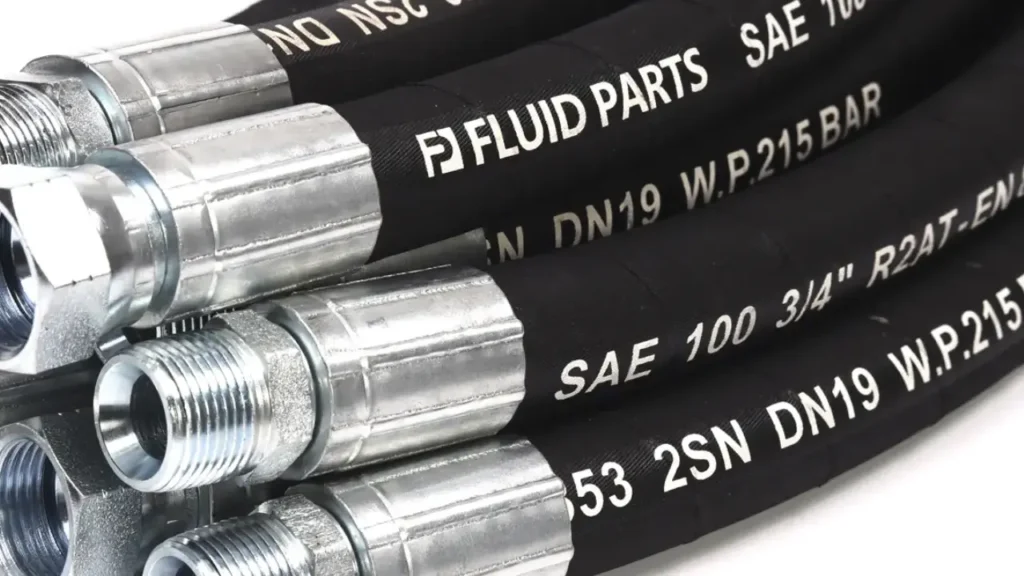
The primary difference between 1SN and 2SN hydraulic hoses lies in their reinforcement:
- 1SN Hydraulic Hose: These hoses have a single steel wire braid for reinforcement. This provides a good balance of strength and flexibility, making them suitable for a wide range of applications where moderate pressures are involved.
- 2SN Hydraulic Hose: These hoses feature two steel wire braids, significantly enhancing their strength and pressure resistance. This makes them suitable for applications that demand higher pressure capabilities.
Here’s a table showing you the key differences between hydraulic hose 1sn and hydraulic hose 2sn :
| Feature | 1SN Hose | 2SN Hose |
|---|---|---|
| Reinforcement | Single steel wire braid | Two steel wire braids |
| Pressure Rating | Moderate | Higher |
| Flexibility | Generally more flexible | Less flexible than 1SN |
| Strength | Good strength | Higher strength |
| Cost | Typically more cost-effective | Generally more expensive |
In essence:
- Choose 1SN hydraulic hoses for applications requiring good flexibility and moderate pressure handling.
- Opt for 2SN hydraulic hoses when higher pressures are involved and greater strength is required.
Important Note: Always refer to the manufacturer‘s specifications and industry standards for precise pressure ratings, temperature limits, and other critical performance characteristics.
Key Characteristics of SN Hydraulic Hoses:
- Good Pressure Resistance: SN hoses can withstand moderate to high pressures, making them suitable for various hydraulic applications.
- Flexibility: The single steel wire braid construction offers good flexibility, allowing for easier routing and installation.
- Cost-Effectiveness: Compared to hoses with multiple steel braids (like SC), SN hoses are generally more cost-effective.
Typical Applications of SN Hydraulic Hoses:
- General Industrial Applications: SN hoses are widely used in various industrial machinery, including those found in manufacturing, construction, and agriculture.
- Mobile Equipment: They are also commonly used in mobile hydraulic systems, such as those found in trucks, construction equipment, and agricultural machinery.
- Lower-Pressure Applications: SN hoses are well-suited for applications where extremely high pressures are not required.
Remember: As with any hydraulic hose abbreviation, it’s crucial to refer to the manufacturer‘s specifications and industry standards for precise details and performance characteristics.
What Is Hydraulic Hose SP
In the context of hydraulic hoses, “SP” typically refers to a specific type of hose construction. It usually indicates a hydraulic hose with:
- Four spirally wound steel wire layers: This provides exceptional strength and pressure resistance, making SP hoses suitable for extremely demanding applications.
- Smooth outer cover: Similar to SC and SN hoses, SP hoses often have a smooth outer cover for enhanced abrasion resistance.
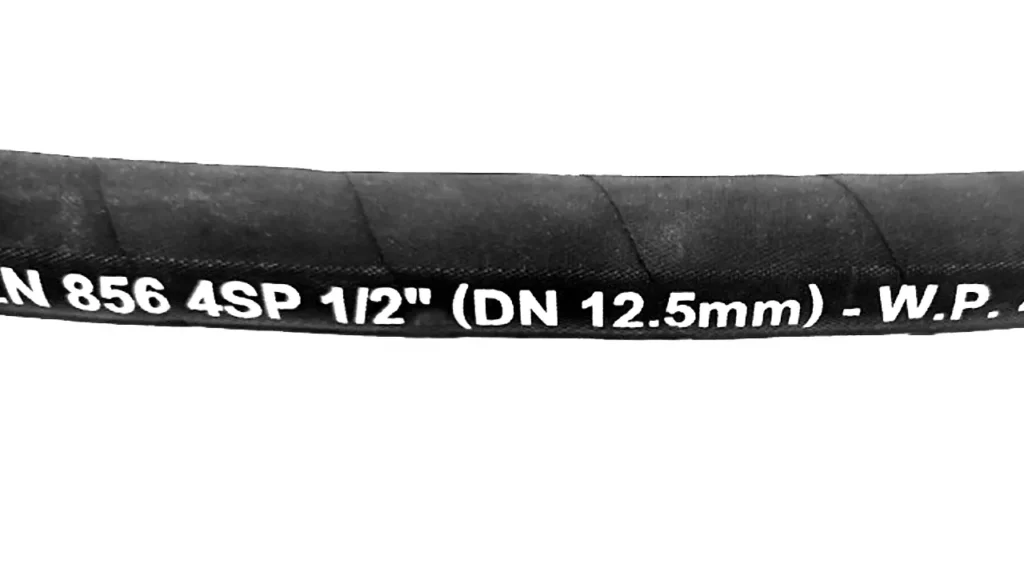
Key Characteristics of SP Hydraulic Hoses:
- Extremely High Pressure Capability: SP hydraulic hoses are designed to handle extremely high pressures, making them suitable for the most demanding hydraulic systems.
- Excellent Flexibility: Despite their robust construction with four steel wire layers, SP hydraulic hoses maintain a good level of flexibility, allowing for easier installation and routing.
- Superior Abrasion Resistance: The smooth outer cover provides excellent protection against abrasion, ensuring durability in harsh environments.
Typical Applications of SP Hoses:
- Heavy-Duty Construction Equipment: SP hydraulic hoses are commonly used in extremely demanding applications, such as large excavators, mining equipment, and offshore drilling rigs.
- High-Pressure Industrial Systems: They are also found in high-pressure industrial systems where exceptional strength and pressure resistance are critical.
Remember: As with other hydraulic hose abbreviations, it’s crucial to refer to the manufacturer‘s specifications and industry standards for precise details and performance characteristics.
What Is Hydraulic Hose SH
“SH” in the industry of hydraulic hoses typically refers to a hose construction that prioritizes superior flexibility while still maintaining high-pressure capabilities.
Here’s the 4SH hydraulic hose structure
- Reinforcement: SH hoses often feature multiple layers of spirally wound steel wire, providing excellent strength and pressure resistance. However, the specific arrangement of these layers is designed to enhance flexibility compared to other high-pressure hose constructions like “SP.”
- Applications: SH hoses are ideal for applications where tight bends and frequent movement are required, such as in mobile equipment and certain industrial machinery.
4SP Hydraulic Hose vs 4SH Hydraulic Hose

Both 4SP and 4SH hydraulic hoses are high-pressure options, but they differ significantly in their construction and pressure capabilities.
4SP Hoses
- Construction: Reinforced with four layers of spirally wound steel wire.
- Pressure Rating: Designed for moderate to high-pressure applications.
- Flexibility: Offers a good balance of strength and flexibility.
- Applications: Suitable for a wide range of industrial and mobile hydraulic systems, including construction equipment, agricultural machinery, and general industrial machinery.
4SH Hoses
- Construction: Reinforced with four to six layers of high-tensile steel wire spirals.
- Pressure Rating: Engineered to withstand extremely high pressures.
- Flexibility: While still flexible, they are designed for applications where the highest pressure resistance is paramount.
- Applications: Ideal for extremely demanding applications such as heavy-duty construction equipment, mining machinery, and offshore drilling rigs.
Here’s a table telling you the key differences 4SP hydraulic hose vs 4SH:
| Feature | 4SP Hydraulic Hose | 4SH Hydraulic Hose |
|---|---|---|
| Reinforcement | Four layers of spirally wound steel wire | Four to six layers of high-tensile steel wire spirals |
| Pressure Rating | Moderate to high | Extremely high |
| Flexibility | Good flexibility | High pressure priority, still flexible |
| Applications | Wide range of industrial and mobile applications | Heavy-duty, high-pressure applications |
In essence:
- Choose 4SP hydraulic hoses for applications requiring high pressure but where flexibility is still important.
- Opt for 4SH hydraulic hoses when the highest possible pressure resistance is critical, even if some flexibility is sacrificed.
Important Note: Always consult the manufacturer‘s specifications and industry standards for precise pressure ratings, temperature limits, and other critical performance characteristics.
Key Characteristics of SH Hydraulic Hoses:
- High Pressure Capability: Despite their emphasis on flexibility, SH hoses can still handle high-pressure hydraulic fluids.
- Superior Flexibility: The unique construction allows for tighter bend radii and greater flexibility compared to other high-pressure hose types.
- Abrasion Resistance: SH hoses typically feature a smooth outer cover for good abrasion resistance.
Remember: As with all hydraulic hose designations, it’s crucial to consult the manufacturer‘s specifications and industry standards for precise details and performance characteristics.
By understanding the nuances of these hydraulic hose abbreviations, you can select the most suitable hydraulic hose for your specific application, ensuring optimal system performance and longevity.
Hydraulic Hose SC SN SP SH
Understanding Hydraulic Hose Abbreviations: SC, SN, SP, SH
These abbreviations commonly denote the construction and performance characteristics of hydraulic hoses.
Here’s a table showing you the differences among them.
| Abbreviation | Construction | Key Characteristics | Typical Applications |
|---|---|---|---|
| SC | Two steel wire braids | High pressure, good flexibility, abrasion resistance | Heavy-duty construction, industrial machinery, mobile hydraulics |
| SN | One steel wire braid | Good pressure resistance, flexibility, cost-effectiveness | General industrial, mobile equipment, lower-pressure applications |
| SP | Four spirally wound steel wire layers | Extremely high pressure, excellent flexibility, superior abrasion resistance | Heavy-duty construction, high-pressure industrial systems |
| SH | Multiple spirally wound steel wire layers (optimized for flexibility) | High pressure, superior flexibility, abrasion resistance | Mobile equipment, applications requiring tight bends |
Key Considerations:
- Pressure Rating Requirements: The application’s pressure demands will significantly influence the choice of hose type.
- Flexibility Needs: Consider the required bending radius and overall flexibility for installation and operation.
- Abrasion Resistance: Evaluate the potential for abrasion and select a hose with appropriate cover material and construction.
- Temperature Range: The hose must be able to withstand the expected temperature extremes of the operating environment.
- Chemical Compatibility: Ensure the hose materials are compatible with the hydraulic fluid being used.
Note: Always refer to the hydraulic hose manufacturer‘s specifications and industry standards for precise details and performance characteristics.
By understanding these abbreviations and their associated characteristics, you can make informed decisions when selecting hydraulic hoses for your specific applications, ensuring optimal system performance, reliability, and longevity.
Conclusion
Understanding hydraulic hose types like SC, SN, SP, and SH helps you select the right solution for your system. Each type has specific pressure ratings, construction, and applications, ensuring efficiency and safety in fluid transfer. Choose wisely for optimal performance.
Proper knowledge of SC, SN, SP, and SH hydraulic hoses allows you to match hoses to machinery demands, reducing downtime and maintenance issues. Correct selection enhances system reliability, prevents leaks, and ensures smooth operations under various pressures and conditions.
For reliable supply and bulk needs, trust Gushan Rubber for wholesale hydraulic hoses. We offer a wide range of SC, SN, SP, and SH hoses to meet your requirements, providing durable, efficient solutions for industrial and mobile applications.

